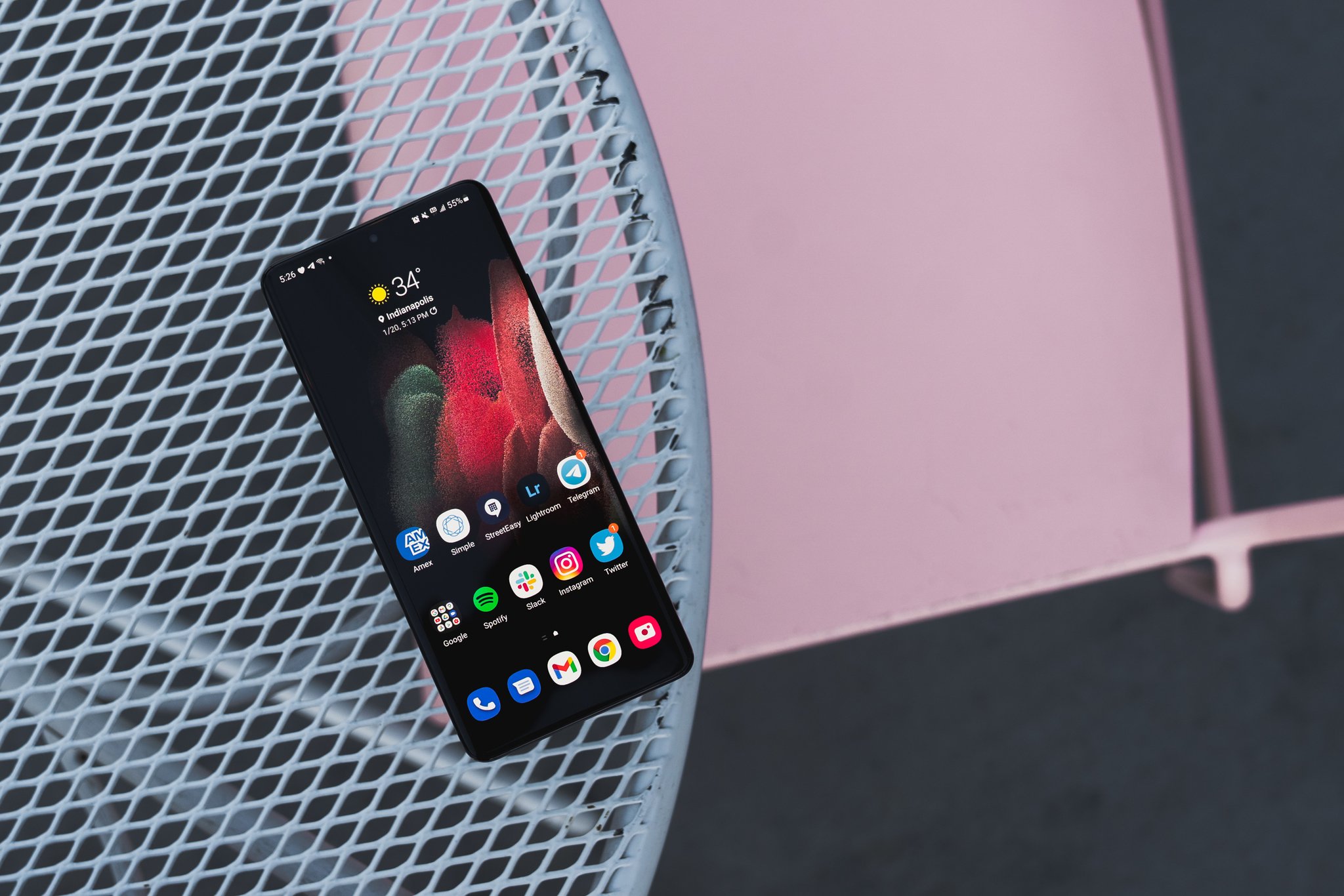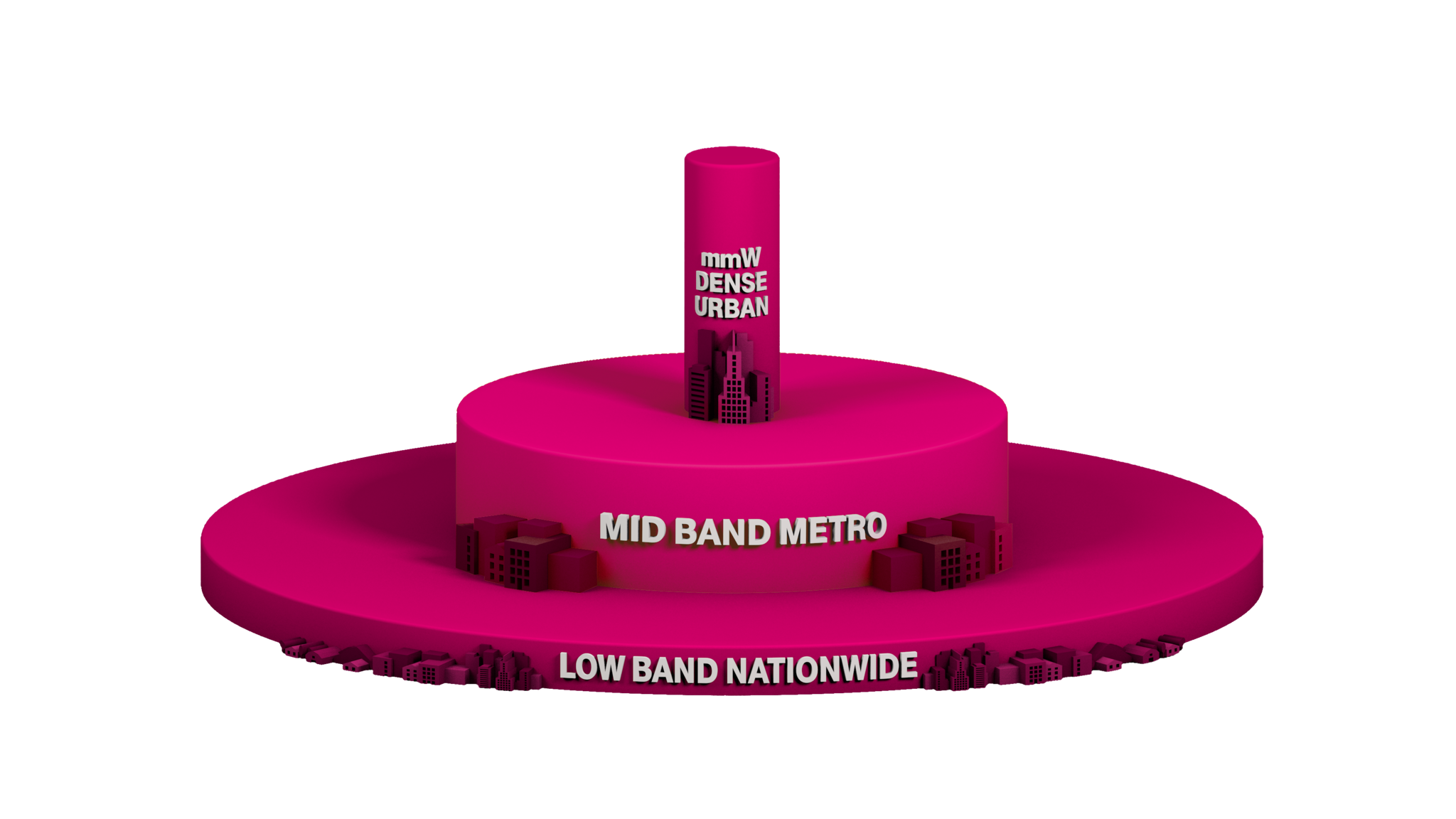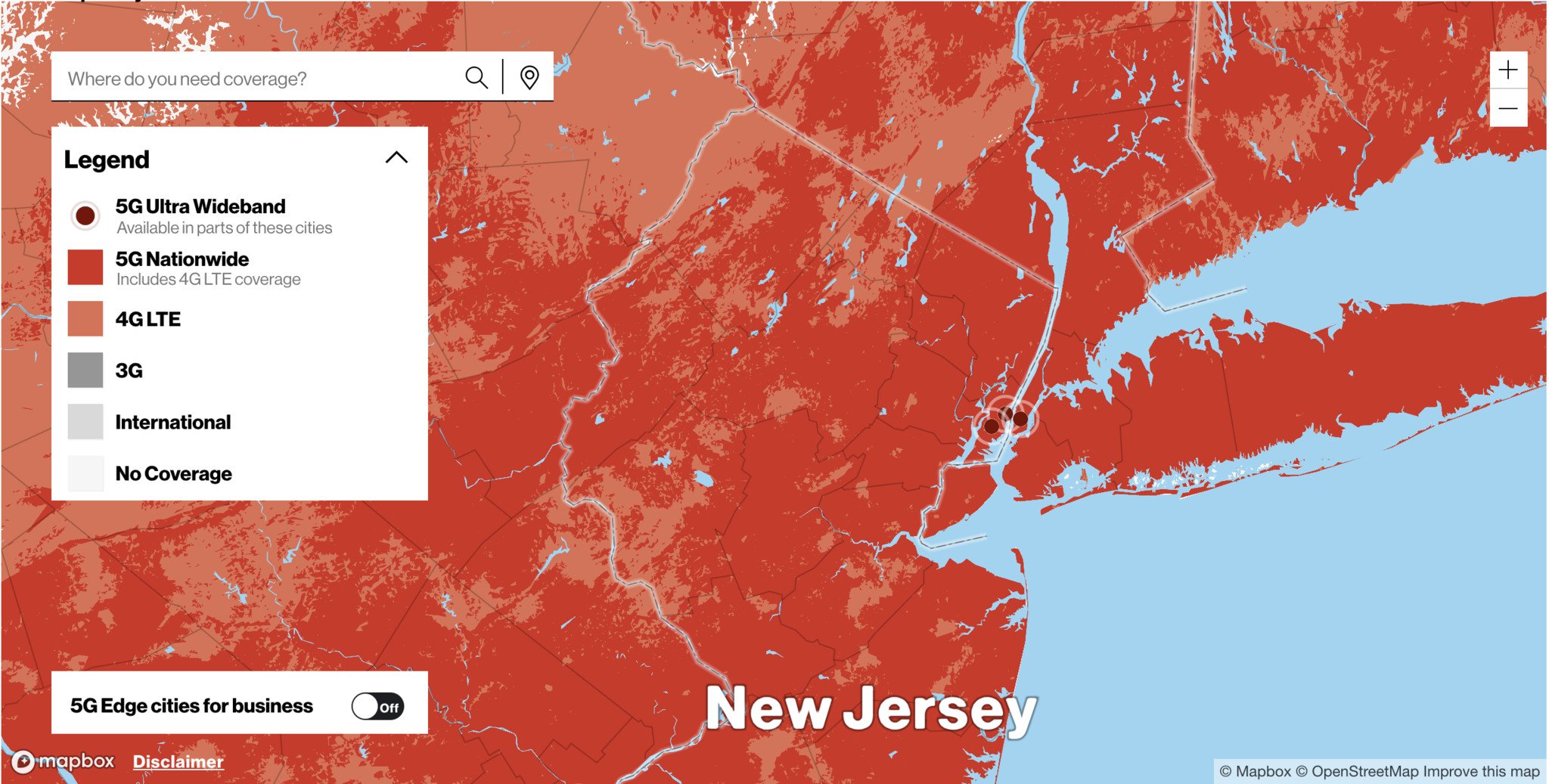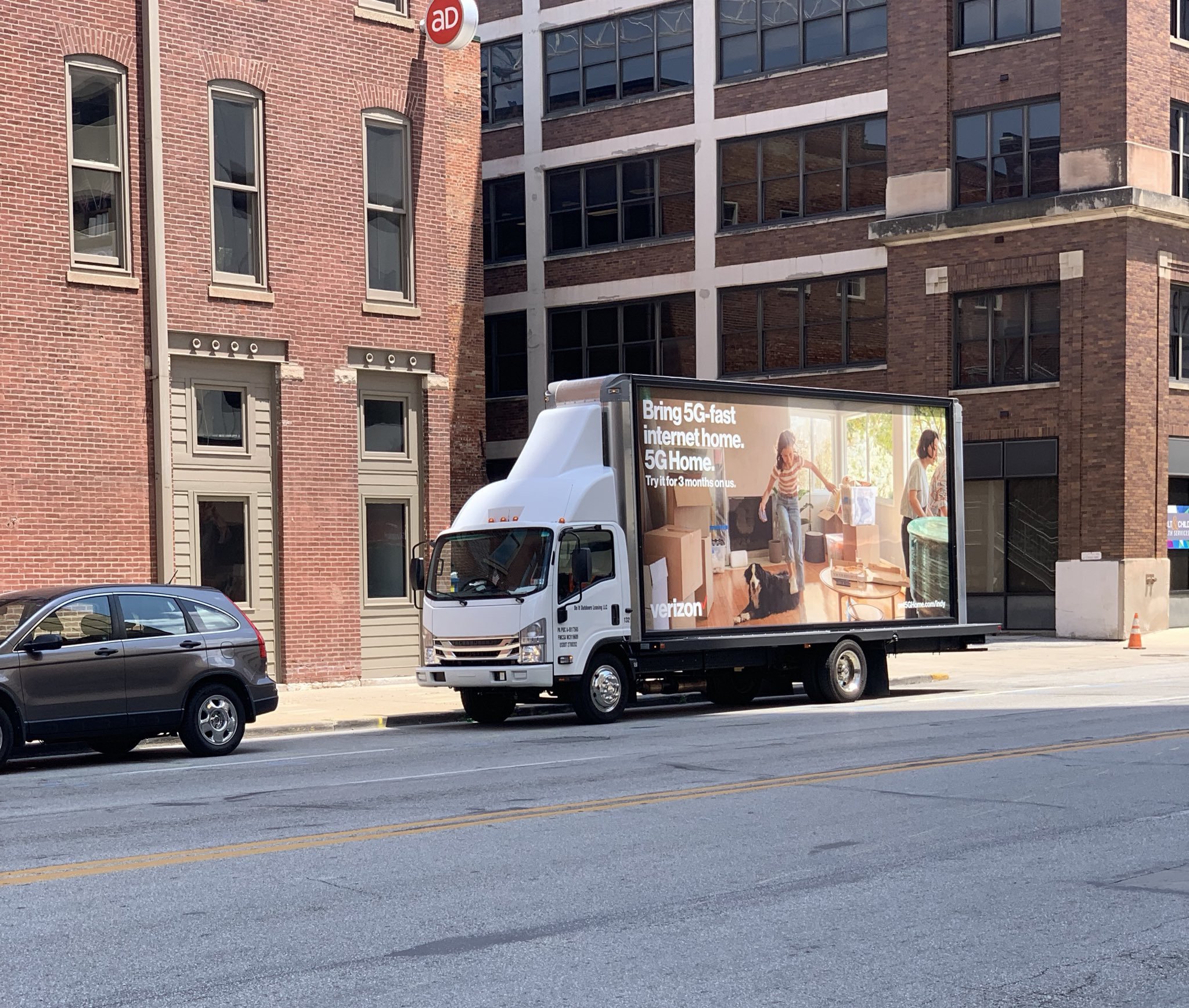All of the carriers are talking about 5G. Here's what it means for consumers.
Just about every new phone comes with 5G support, so it's a bit surprising that each carrier seems to have a different idea about what exactly 5G is. While all major carriers have committed to building a nationwide 5G network on low-band spectrum, the speed of deployment and the available spectrum can differ greatly. 5G will even serve as the foundation of a new network, with Dish Wireless going full steam ahead with its own fully 5G network. There's a lot to keep straight, but like 4G and 3G before it, coverage matters most with 5G.
How is 5G different from 4G?
At its core, 5G is the fifth-generation wireless technology standard, which comes after 3G and 4G. It refers to the technology used to connect your phone, tablet, laptop, or anything with a 5G-compatible chipset. In the U.S., AT&T, Dish Wireless, T-Mobile, UScellular, and Verizon use this new standard.
The highlight of 5G can be summed up quickly: it has the potential to be exponentially faster than 4G while also lowering the latency between your phone and the thing it's trying to connect to. It's also coming at a point when carriers are gaining access to new chunks of the spectrum, such as C-band around 6GHz and mmWave around 30GHz.
While most new phones are supporting the tech, 5G can be used for a lot more. Naturally connected devices like cars and notebook PCs are two examples; 5G also has the capacity to serve as a home Internet provider in some areas. Both T-Mobile and Verizon are selling a home internet service based on their 5G networks.
More data demand than ever
5G spread fast and now covers most Americans, but for many people, it's not quite what they expected. 5G refers to 5G NR (New Radio), which contains many different technologies with different implementations. 5G comes with the promise of better speed and latency, though your mileage may vary depending on exactly what type of 5G you have.
There are three main categories of 5G, and they are based on the frequency being used. These connections are low-band, mid-band, and mmWave (millimeter wave). Low-band and mid-band 5G are collectively referred to as sub-6, indicating that it is below 6GHz. Sub-6 also includes C-band. These 5G terms can get a bit confusing, but the most important thing to remember is that the lower bands have greater coverage while higher bands have greater speed potential.
All of the major carriers are looking towards combining these different 5G categories to build out a complete network, depending on the density and geographic challenges in each area.
All about the frequency
T-Mobile uses a combination of 600MHz band n71 and 2500MHz band n41 spectrum for most of its coverage. Lower frequencies have a greater range, so n71 5G makes up most of T-Mobile's coverage. Band n41 coverage adds greater capacity and speed to T-Mobile's network. While its coverage deficit means n41 will take longer to reach full coverage, T-Mobile has already covered more than 165 million people with this faster 5G. Finally, mmWave is being used to add capacity in the areas that need it most.
T-Mobile calls band n41, mmWave, and the upcoming C-band spectrum 5G Ultra Capacity 5G. Its approach to 5G is like a layer cake, with its three main spectrum types making up the tiers.
AT&T's 5G network started on mmWave and got off to a solid start, with more than dozens of cities getting some amount of coverage. The real gains for AT&T came when it began deploying 5G on its 850MHz sub-6 spectrum. While the speeds weren't too impressive compared to fast LTE results, the rapid growth has been good for early adopters of 5G devices.
AT&T was the first carrier to deploy 5G with DSS, or dynamic spectrum sharing. This technology allows the tower equipment to automatically allocate spectrum from 4G to 5G based on load. This technology will likely prove to be key to a smooth transition to 5G.
Verizon started with mmWave, building its Ultra Wideband network in several cities. With the release of the iPhone 12, Verizon opened up its nationwide 5G network with a shared spectrum from its LTE coverage. Verizon uses this shared spectrum to quickly deploy a 5G network without needing to construct new towers or even secure a new spectrum. The tradeoff is that it likely won't be as fast as T-Mobile's and AT&T's low-band 5G in ideal conditions.
Still, Verizon has made up a ton of ground and now covers more than 230 million people with this network. Its mmWave coverage is very fast in the 75 cities it's available, though coverage is very limited.
mmWave is very fast but coverage is limited.
Verizon and AT&T are largely waiting for C-band spectrum to really compete with T-Mobile. C-band uses some newly vacant 6GHz spectra for communications. AT&T, T-Mobile, and Verizon each spent billions securing chunks of this new spectrum. While AT&T and Verizon needed to get ahold of much more, T-Mobile could get by with some extra capacity in a few key areas.
C-band will perform somewhere between T-Mobile's mid-band 5G and mmWave with similar coverage performance. AT&T and Verizon will need to build many new cell sites to make this plan work, though each company should have the capital to make it a reality.
Standalone 5G
5G SA is short for 5G standalone. As the name implies, this type of 5G network can exist and operate independently without a legacy network supporting it. Why is this important? Because SA lets you connect directly to the fastest network without first connecting to an older network. This can help your connection feel more consistent as you switch towers and move in and out of 5G coverage. Most new 5G phones support SA out of the box, so there's not much to worry about.
Calling over 5G is an important step for 5G, so phones won't need to rely on 3G or 4G towers. This will also save battery life since phones won't need to keep switching between networks to make and receive calls.
For now, you won't see 5G SA service on any network, but by the end of the year, it should be more common. If everything goes to plan, you shouldn't notice anything.
Which phones support 5G?
![]() The affordable Pixel 5a supports 5G on most carriers.
The affordable Pixel 5a supports 5G on most carriers.
Most new phones you can get right now come with support for 5G. Whether you're looking for something cheap or want the most advanced flagship around, 5G is probably included. If you buy your phone unlocked, you can take it with you to another carrier as long as that carriers' 5G bands are supported. The most popular phones like the Galaxy S21 series, 5G Pixels, and iPhone 12 series support all of the major carriers.
AT&T doesn't play as nicely when it comes to 5G support for some 5G-capable phones from other brands; for instance, compatible OnePlus phones can't access AT&T's 5G network. If you're looking to bring a phone to AT&T 5G, double-check with customer support, or you may get stuck with LTE on your new phone.
A few older 5G phones designed for carriers may not be compatible with other carriers. Sprint's 5G network is completely dead now, so the handful of 5G phones that only worked on Sprint like the LG V50 won't work on T-Mobile's 5G despite support for band n41. Thankfully, the Galaxy S20 series designed for Sprint 5G has been updated for T-Mobile 5G.
5G home internet
Verizon was fast out of the gate with its 5G Home Internet service based on its Ultra Wideband 5G network. This network is capable of fiber-like speed, with peaks over 1Gbps and averages around 500Mbps. Ping times are also great on Verizon's network. As expected, you'll need to install a rather large antenna in one of your windows, and availability is limited to those with a good connection to the mmWave network.
T-Mobile's home internet service focuses a lot more on rural and suburban areas. T-Mobile's network performance varies quite a bit depending on which of its towers you can connect to. With a good connection on T-Mobile's band n41 5G, you can easily get 300Mbps, with peaks close to 1Gbps. Still, with the best rural 5G coverage, T-Mobile is a great option for those with limited connectivity options.
When can I get 5G?
5G coverage has grown by leaps and bounds and now reaches more than 305 million people on T-Mobile. AT&T and Verizon are neck and neck for positions two and three. T-Mobile's coverage superiority continues into the mid-band, with more than 165 million people now covered by T-Mobile's 2.5GHz band n41 Ultra Capacity 5G.
For now, 5G coverage looks a lot more like LTE coverage. Check carriers' individual maps to see their range, including Ultra Capacity and mmWave coverage.
Verizon and AT&T have continued to build mmWave in dense urban areas, though coverage is very low. They have focused on the most densely populated areas, including airports and stadiums. Verizon now has Ultra Wideband coverage, or mmWave, in parts of 75 cities across the country.
Should you upgrade to 5G?
The sheer amount of data that 5G can transfer at high speeds means it can do much more than bring fast downloads to your phone. Many people use the currently available sub-6 5G connections like a robust LTE connection, but the future is much brighter with a combined network with multiple bands of 5G available.
5G speeds will stay higher than LTE even with a lot of connections, and it will be easier than ever to deliver high-speed internet to people, even when they are in an older building that hasn't been upgraded for fiber. For now, 5G is like slightly faster LTE, but as the infrastructure gets built, more applications will take advantage of the improved connectivity.
If you're buying a new phone, it's more than likely going to come with 5G included. And the best cell phone plans come with 5G support. If you're wondering if it's worth getting an upgrade specifically for 5G, it's probably not. LTE is still fast enough for most of what we do online, and until C-band gets fully built, that's not likely to change for a while.
The next big thing in connectivity
5G: Everything you need to know
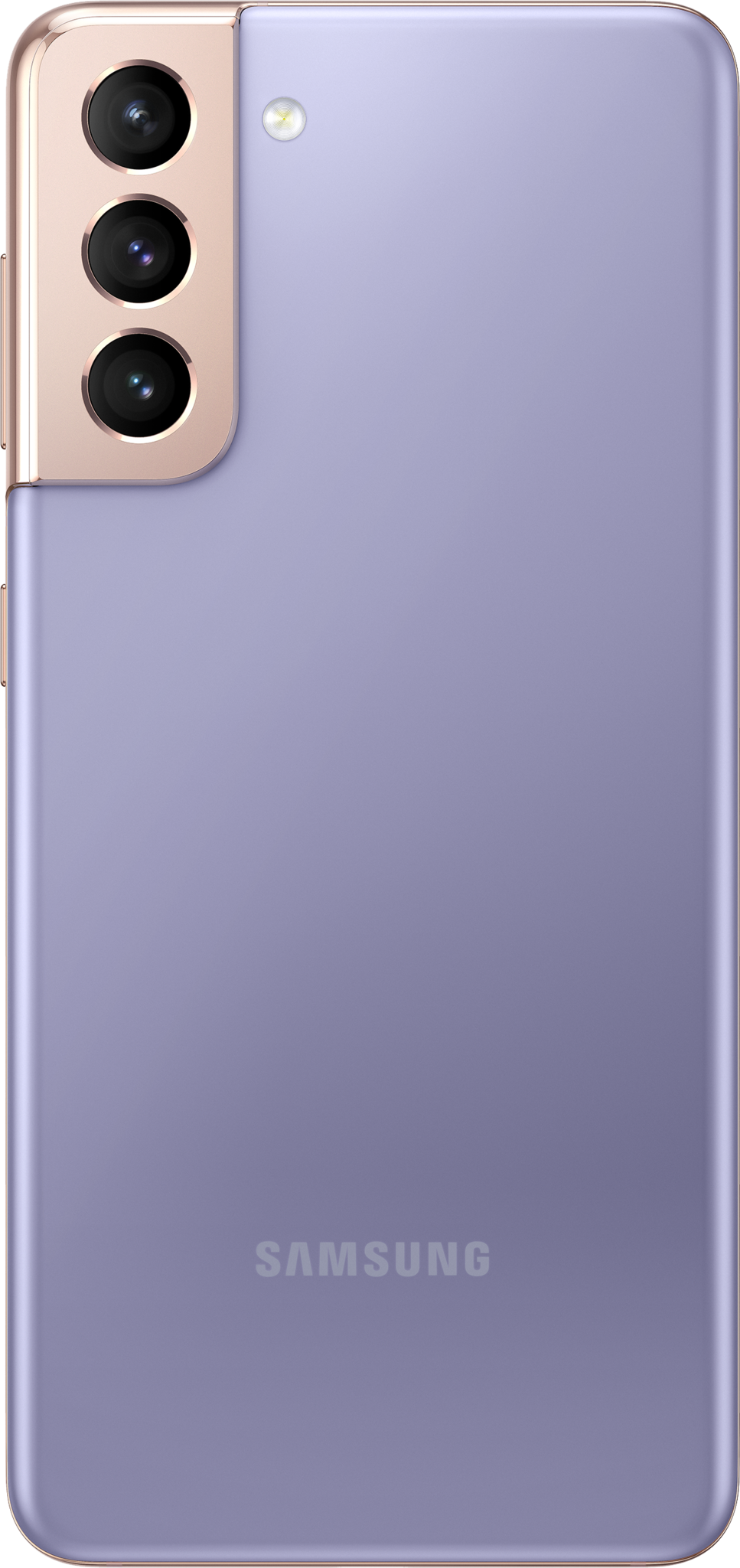
Source: androidcentral
